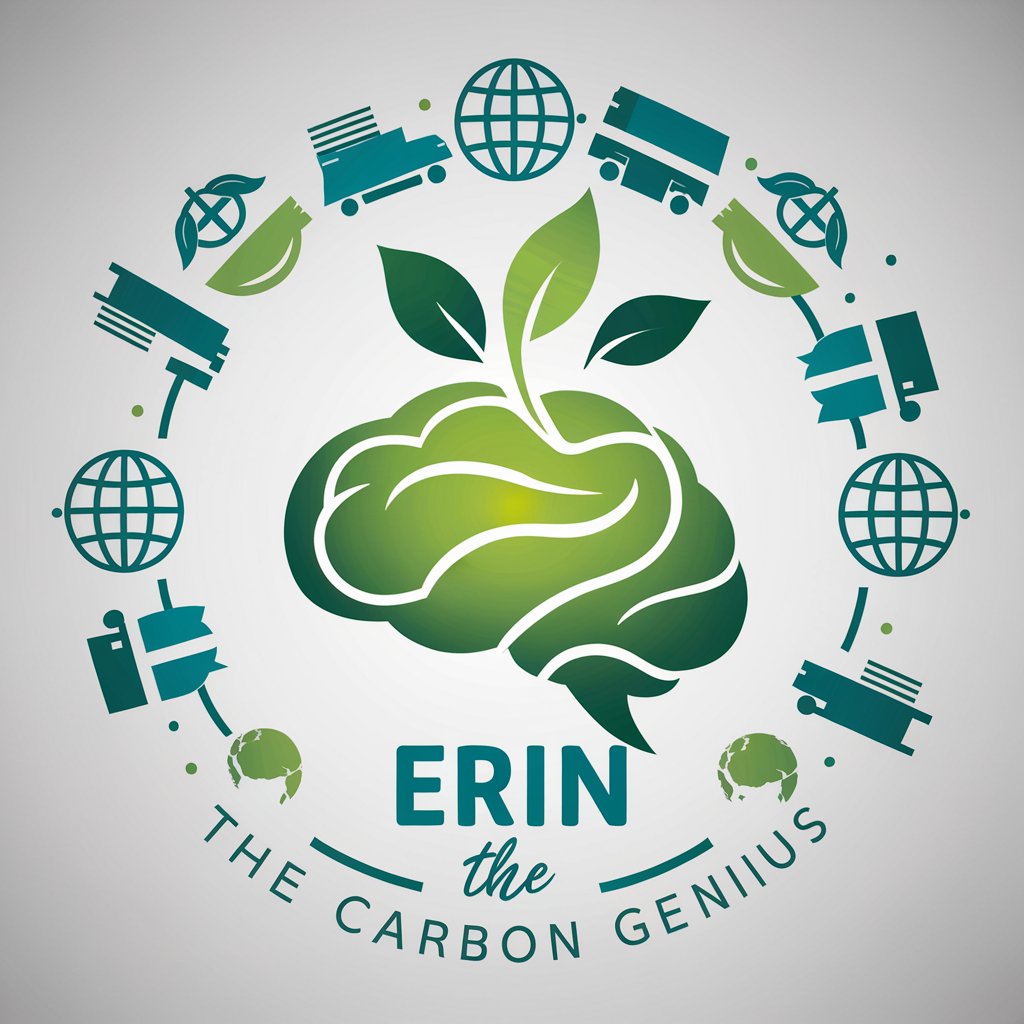Carbon footprint for schools - Carbon Footprint Tracking

Welcome to Eco Educator, your guide to a greener school.
Empowering schools with AI-driven carbon management
How can schools reduce their carbon footprint through energy efficiency?
What are the best practices for engaging students in sustainability projects?
Can you provide a template for a school carbon footprint report?
What methodologies are recommended for calculating a school's carbon emissions?
Get Embed Code
Introduction to Carbon Footprint for Schools
The 'Carbon Footprint for Schools' function is designed to help educational institutions understand, measure, and manage their carbon emissions. This tool enables schools to identify major sources of greenhouse gases, such as energy consumption (electricity and heating), transportation (school buses and staff commuting), and waste management. It guides in calculating the carbon footprint using accepted methodologies like the GHG Protocol or DEFRA guidelines, offering a clear picture of a school's environmental impact. This, in turn, fosters a culture of sustainability within school communities, helping them implement effective carbon reduction strategies. For example, a school may use this tool to calculate its annual emissions, identify high-emission areas, and prioritize improvements such as upgrading to energy-efficient appliances or enhancing recycling programs. Powered by ChatGPT-4o。

Main Functions of Carbon Footprint for Schools
Emission Source Identification
Example
Identifying sources such as electricity use in school buildings, transportation for students and staff, and waste produced by the school.
Scenario
A school can assess various departments and activities to pinpoint where most emissions are generated, leading to targeted interventions.
Carbon Footprint Calculation
Example
Using formulas and factors from protocols like IPCC or DEFRA to compute total emissions in equivalent CO2.
Scenario
A school inputs data regarding electricity consumption and fuel used for school buses into the tool, which calculates the total greenhouse gases emitted annually.
Reduction Strategy Formulation
Example
Providing recommendations for energy efficiency, renewable energy adoption, and waste reduction.
Scenario
After identifying the major emission sources, the tool suggests installing solar panels and implementing a robust recycling program to reduce the school’s carbon footprint.
Reporting and Documentation
Example
Generating carbon footprint reports that can be used for environmental impact assessments and sustainability certifications.
Scenario
Schools can use the generated reports to communicate their sustainability efforts to parents, staff, and regulatory bodies, promoting transparency and accountability.
Ideal Users of Carbon Footprint for Schools
Educational Administrators
School principals and district superintendents who are responsible for overseeing school operations and are committed to reducing environmental impact.
Sustainability Coordinators
Individuals specifically tasked with implementing and managing sustainability initiatives within educational institutions.
Environmental Science Teachers
Educators who can integrate the tool’s data and reports into their curriculum to teach students about environmental science and sustainability.
Facility Managers
Responsible for the maintenance and operation of school facilities, using the tool to optimize energy use and reduce operational costs.

How to Use Carbon Footprint for Schools
1
Visit yeschat.ai for a free trial without needing a login, and there's no requirement for ChatGPT Plus.
2
Identify the main sources of emissions at your school, such as electricity use, transportation, and waste management.
3
Gather data on these emission sources, including utility bills, transportation logs, and waste disposal records.
4
Use the provided tools and templates to calculate the school's total carbon footprint from the gathered data.
5
Review and analyze the results to identify potential areas for improvement and develop strategies to reduce emissions.
Try other advanced and practical GPTs
Carbon Calculator Guide
Simplify Your Sustainability Journey

Carbon Chat (Beta)
Empowering Sustainability with AI

O.L.I. (Operational Liaison for Inventors)
Empowering Inventors with AI Guidance

Viktoria aka "Artistic Visionary"
Revolutionizing art creation with AI

NEX: PitchDeck Excellence Assistant
Craft Your AI Pitch with Precision

Poster Maker in Frames
Design, Frame, and Personalize with AI

Carbon Budget Tracker
Empowering businesses with AI-driven carbon management.

Erin the Carbon Genius
Optimize Logistics with AI-Powered Carbon Insights

Millionare
Challenge Your Mind, AI-Enhanced Trivia!

AI Ranks Your Grammar IQ!
Enhance your vocabulary through AI-driven contextual quizzes.

GPT Communicator
Streamlining AI Interactions, Effortlessly

Mirror Communicator
Empower Your Words with AI

Questions and Answers about Carbon Footprint for Schools
What exactly is a carbon footprint for schools?
A carbon footprint for schools quantifies the total amount of greenhouse gases produced directly and indirectly from school operations and activities, expressed in carbon dioxide equivalents.
How can schools reduce their carbon footprint?
Schools can reduce their carbon footprint by implementing energy-efficient technologies, using renewable energy sources, promoting sustainable transportation options for students and staff, and improving waste management practices.
Why is it important for schools to monitor their carbon footprint?
Monitoring the carbon footprint helps schools identify and manage their environmental impact, promotes sustainability, and can also lead to cost savings on energy and resources.
What are the common challenges when calculating a school's carbon footprint?
Common challenges include gathering accurate data, accounting for all sources of emissions, and engaging the whole school community in sustainability efforts.
Can engaging students in carbon footprint projects benefit their education?
Yes, involving students in carbon footprint projects can enhance their understanding of environmental science, teach them about sustainability, and foster responsible behaviors that contribute to reducing their own carbon footprints.
